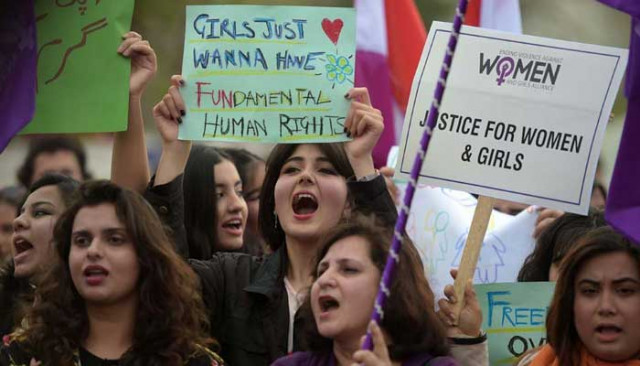Factbox: Do women enjoy equality?
Facts on inequality today

A Reuters file photo
From getting more girls into school to reducing deaths in childbirth, improvements have been made. But equality remains a long way off, with millions of girls and women’s lives still scarred by discrimination, poverty and violence.
As the world marks International Women’s Day, here is a snapshot of progress since the 1995 Beijing Platform for Action, the most progressive blueprint for advancing women’s rights.
- 25% of seats in national parliaments are held by women - more than double the 11% share in 1995.
- In the last decade, 131 countries have enacted legal and regulatory reforms in support of gender equality.
- The number of girls out of primary school has halved from 65 million to 32 million.
- Two-thirds of secondary school age girls are enrolled in school, up from half - although not all finish.
- 90% of girls aged 15 to 24 are literate, up from 80%.
- The number of maternal deaths per 100,000 live births fell 38% between 2000 and 2017.
- About 50 countries have liberalized their abortion laws in the last 25 years, with 18 lifting outright bans.
- Child marriage affects one in five girls today, down from one in four in 1995.
- 34% of girls aged 15 to 19 have undergone FGM in the 31 countries where there is U.N. data, down from 47% in 1995.
- The adolescent birthrate has fallen from 60 to 44 births per 1,000 girls.
- Girls born today can expect to live nearly eight more years than girls born in 1995 (an average of 75.2 years).
Facts on inequality today
- Men hold 75% of parliamentary seats worldwide and 73% of managerial positions.
- Women on average do three times more unpaid care and domestic work than men, limiting access to other opportunities.
- Women are paid 16% less than men on average, rising to 35% in some countries.
- Globally, 62% of women aged 25 to 54 are in the labor force compared to 93% of men - broadly unchanged since 1995.
- Nearly one in five women has faced violence from an intimate partner in the last year.
- At least 60% of countries still discriminate against daughters’ rights to inherit land and other assets in either law or practice.
- Nearly one in four girls aged 15–19 is neither employed, in education or training, compared to one in 10 boys.
- Each year, 12 million girls are married in childhood, and four million are at risk of FGM.
- 970,000 adolescent girls live with HIV compared to 740,000 in 1995. Girls account for nearly three in four new infections among adolescents.
Sources: UN Women, UNICEF, Center for Reproductive Rights


















COMMENTS
Comments are moderated and generally will be posted if they are on-topic and not abusive.
For more information, please see our Comments FAQ